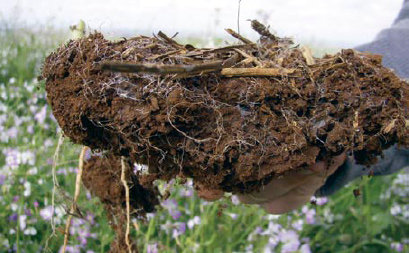Soil compaction is a common and constant problem on most farms that till the soil. Heavy farm machinery can create persistent subsoil compaction, even when under no-tillage management.1 Scientists have found that compacted soils resulted in: (a) physically restricted root growth; (b) poor root-zone aeration (inadequate oxygen flow to roots); and (c) poor drainage that contributes further to poor soil aeration and to more losses of nitrogen from denitrification…
by James J. Hoorman, João Carlos de Moraes (Juca) Sá & Randall ReederJim Hoorman is an Ohio State University Extension Educator in cover crops and water quality. Juca Sá is a scientist working on soil organic matter and fertility at Univ. Ponta Grossa, PG, Brazil. Randall Reeder recently retired from Extension Ag Engineering, Ohio State Univ., specializing in soil compaction.
Editors’ Note: Modified extensively from an Ohio State Extension Fact Sheet, 2009, in collaboration with Hoorman & Sá, along with the generous assistance of John Grove (soil scientist, U.Ky.), Tom Schumacher (soil scientist, SDSU), and Kris Nichols (mycorrhizae scientist, USDA-ARS).

